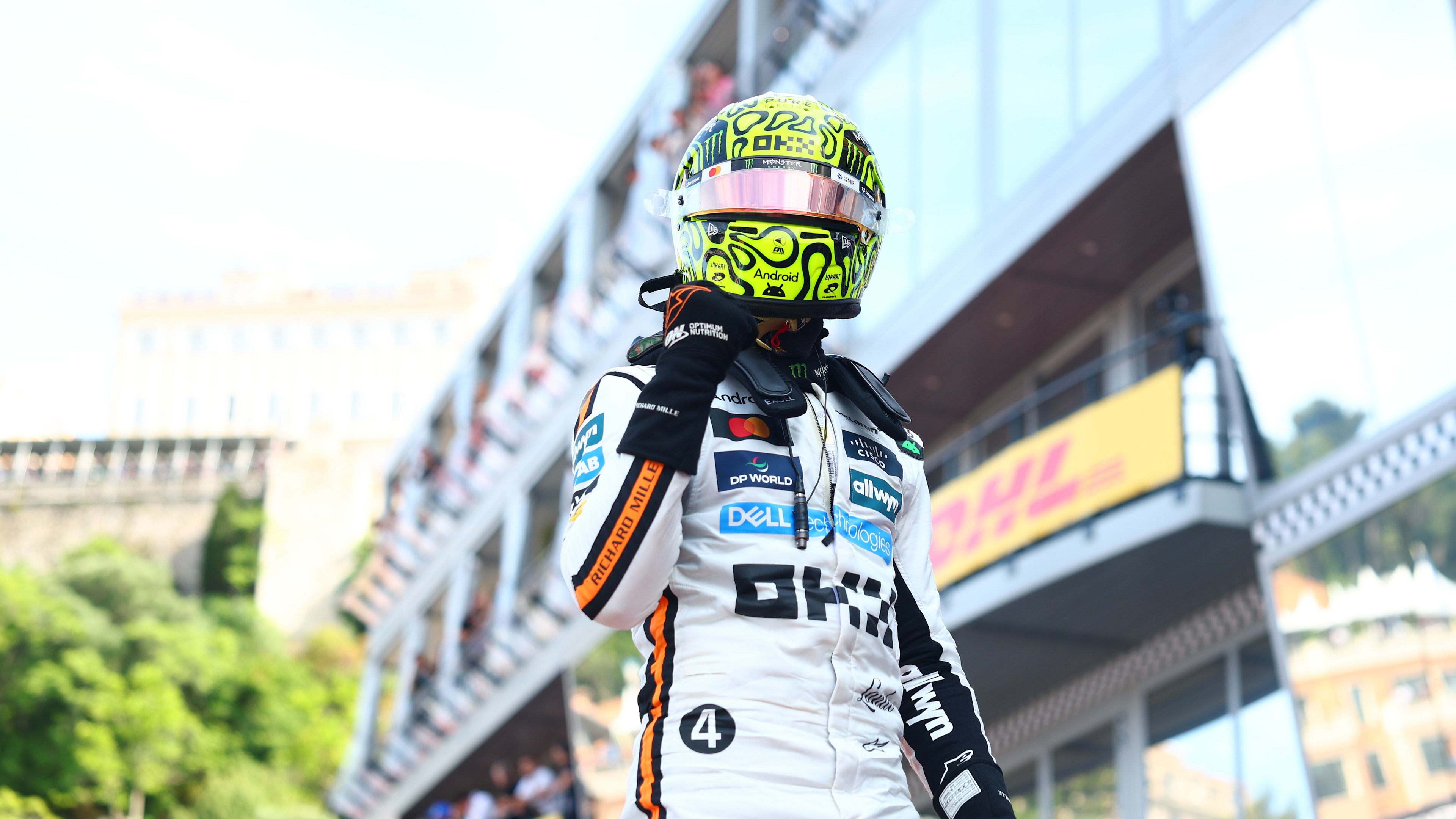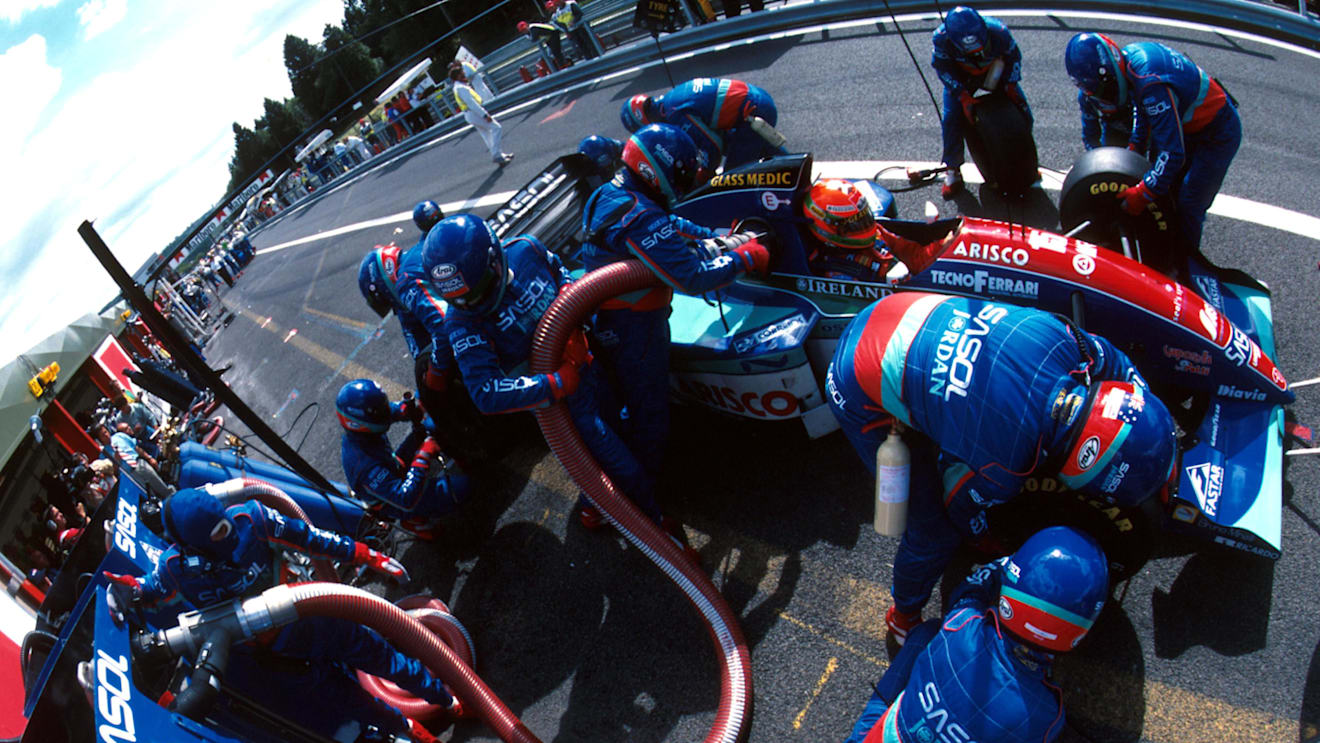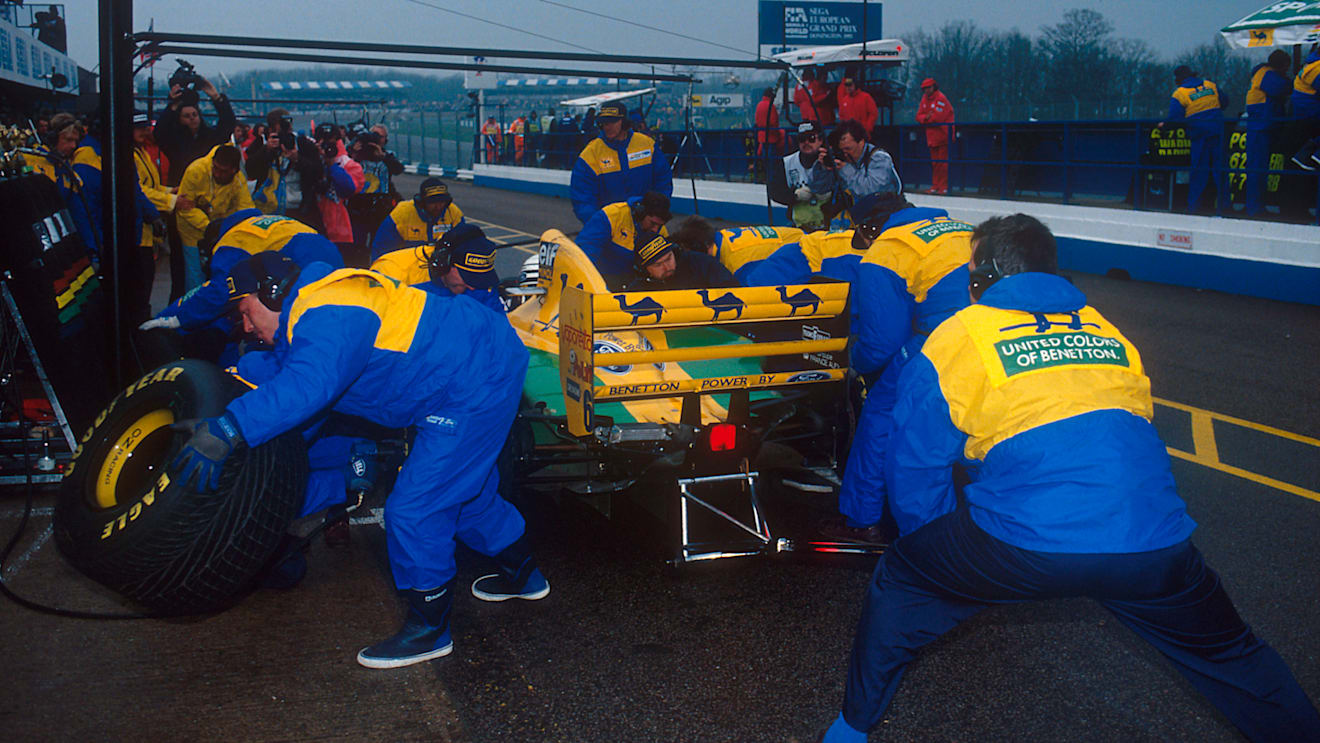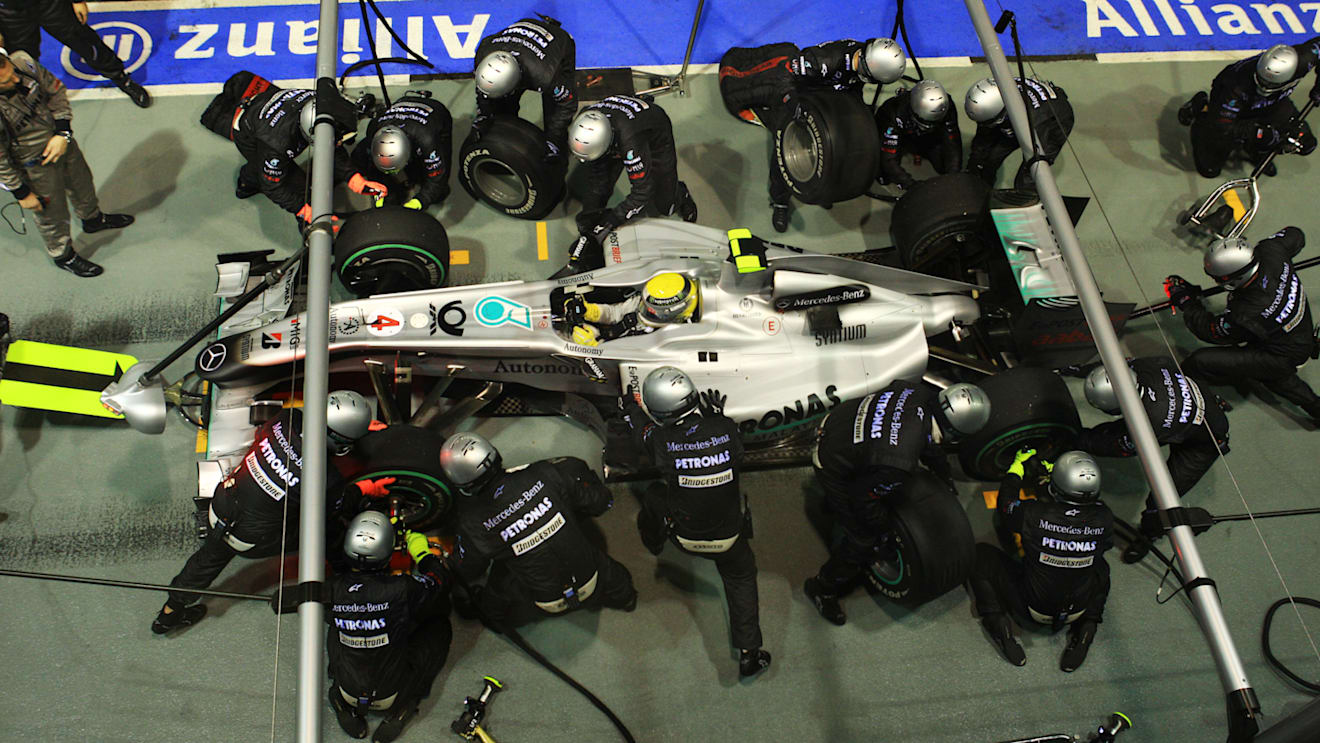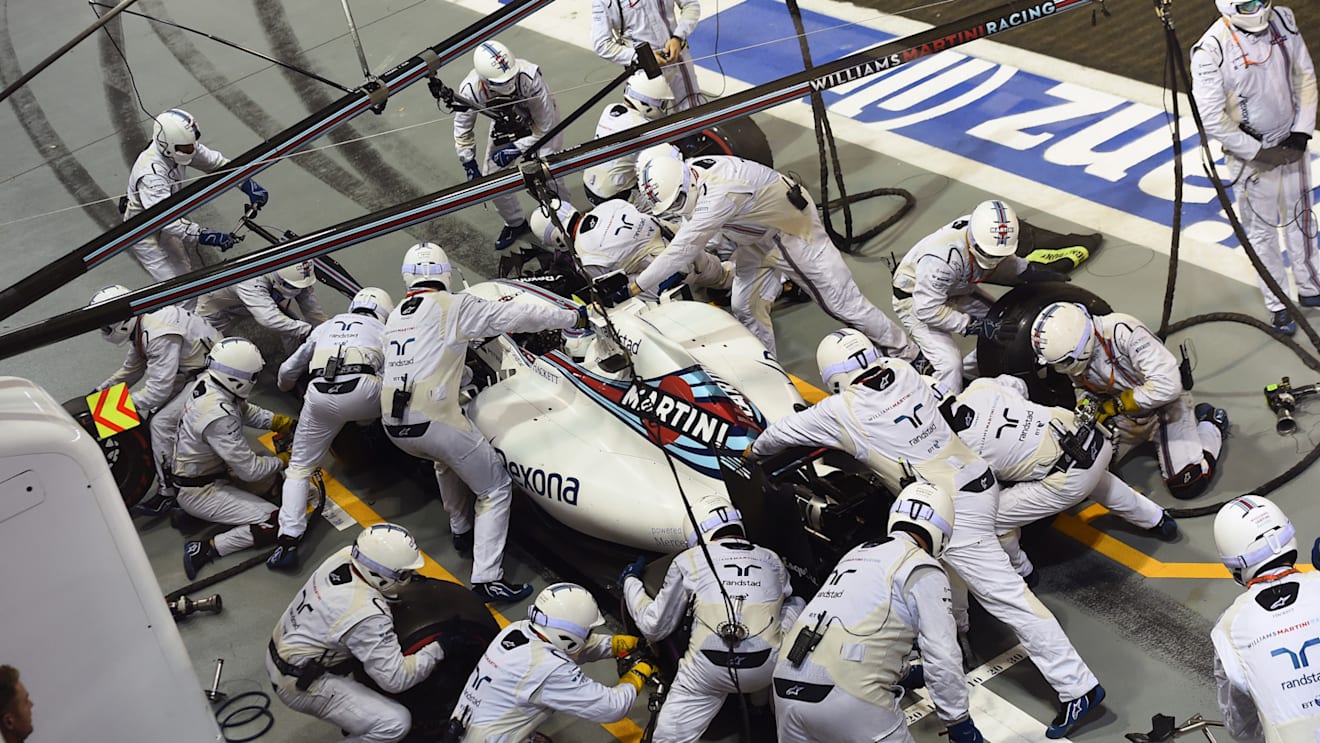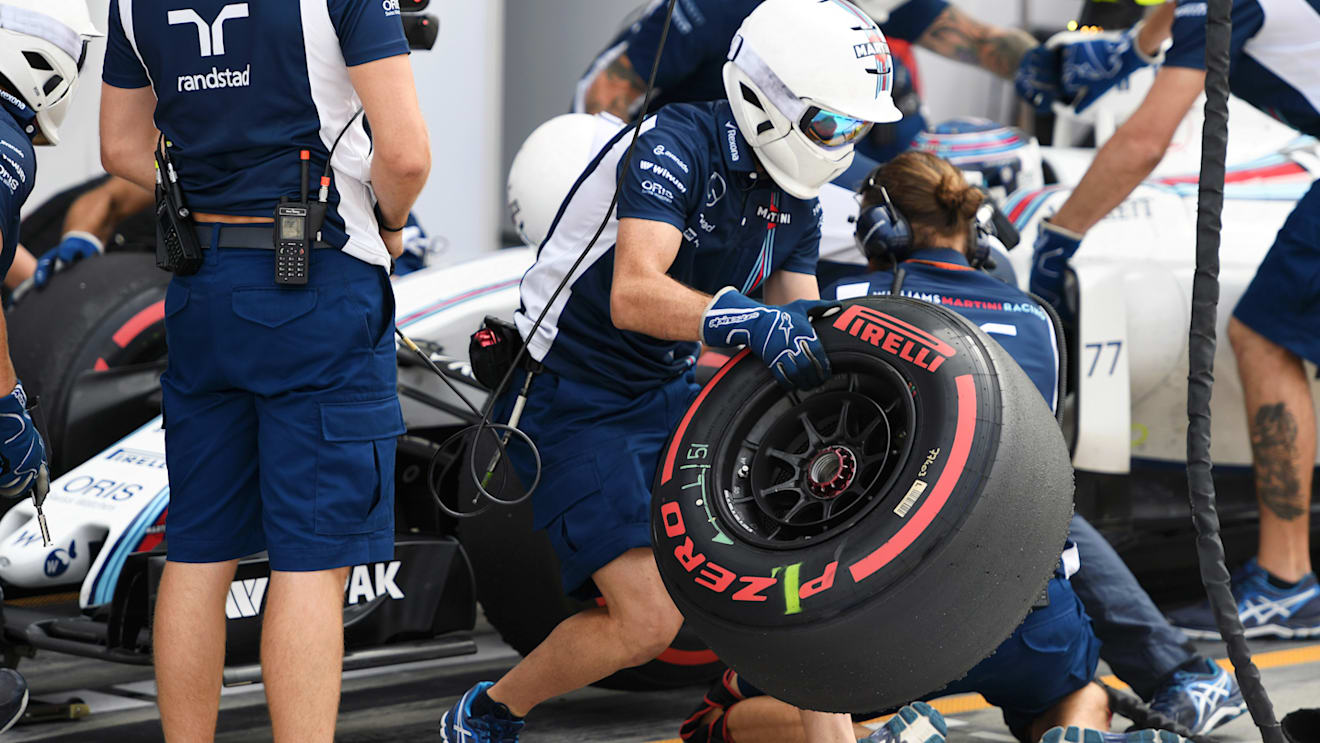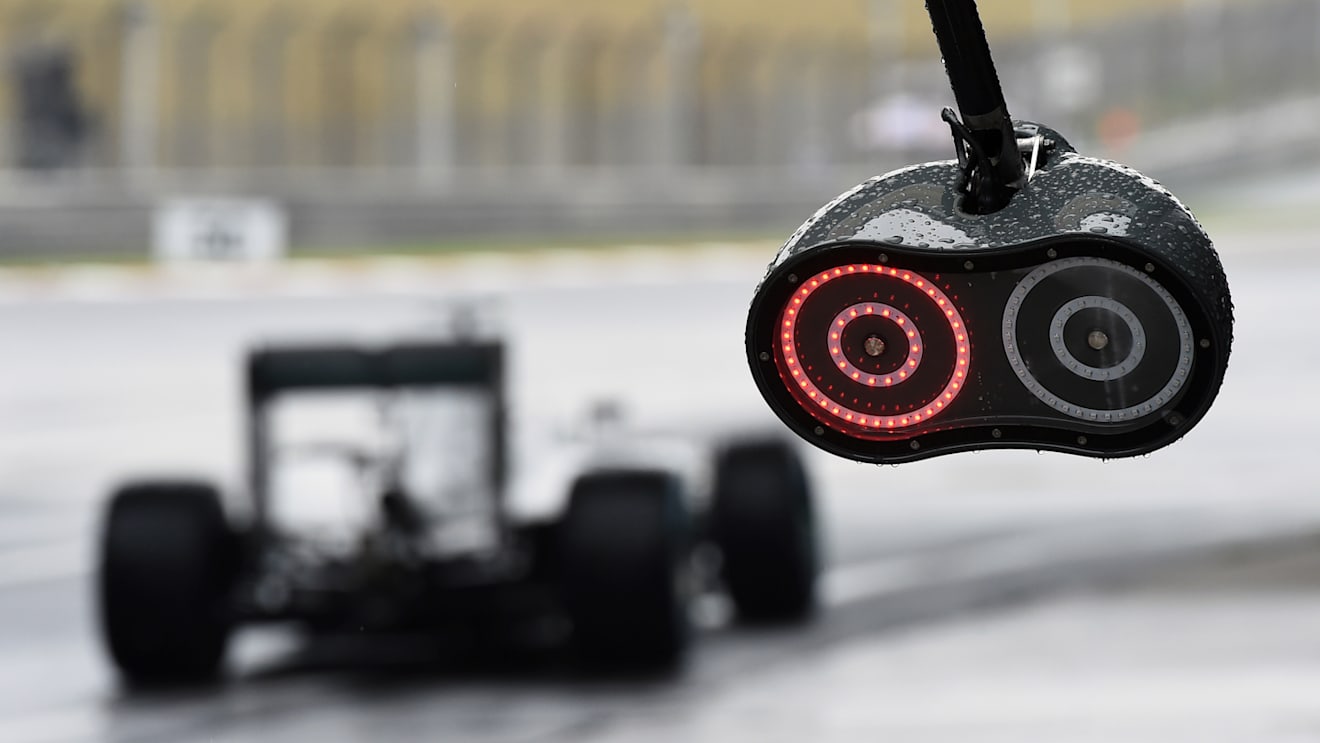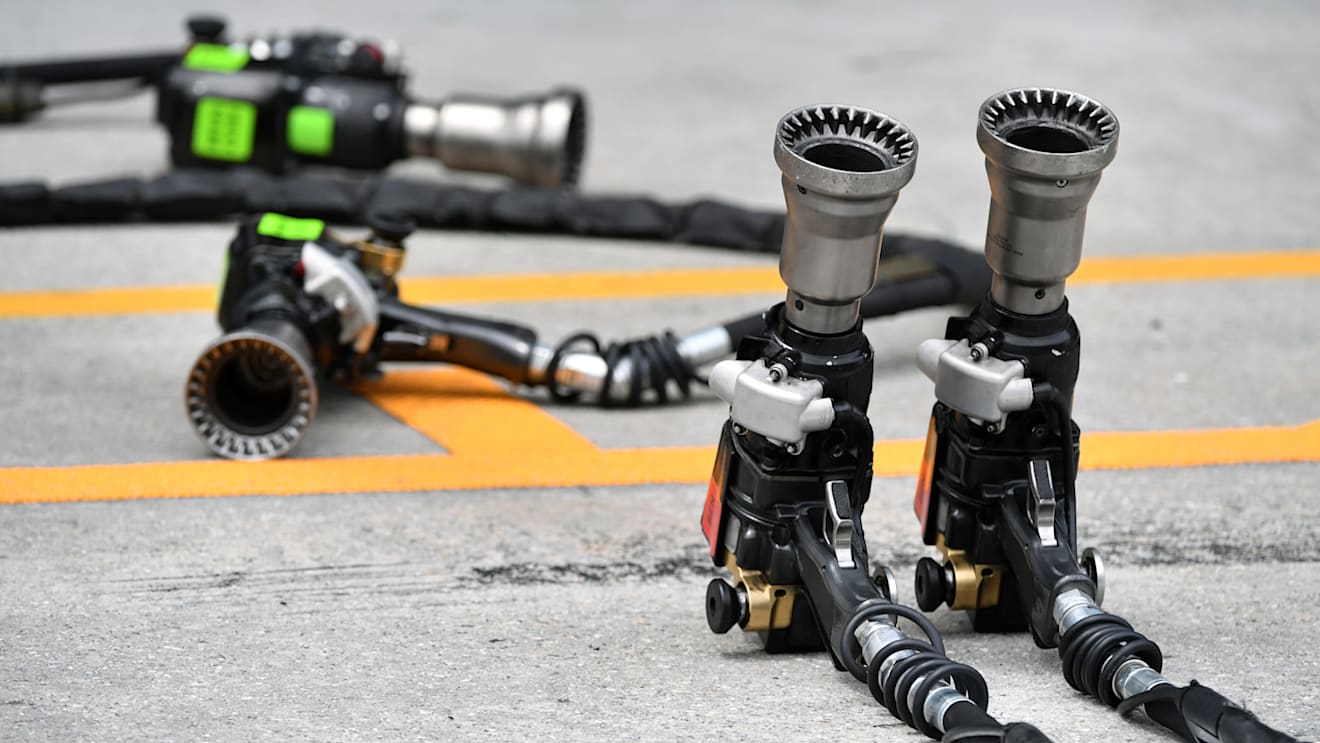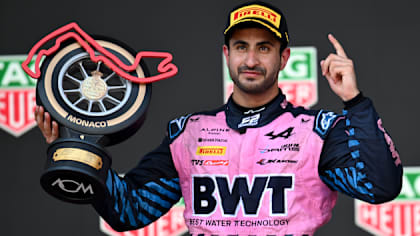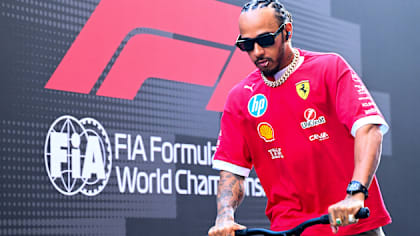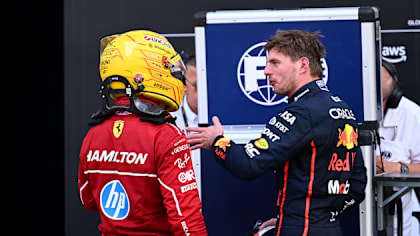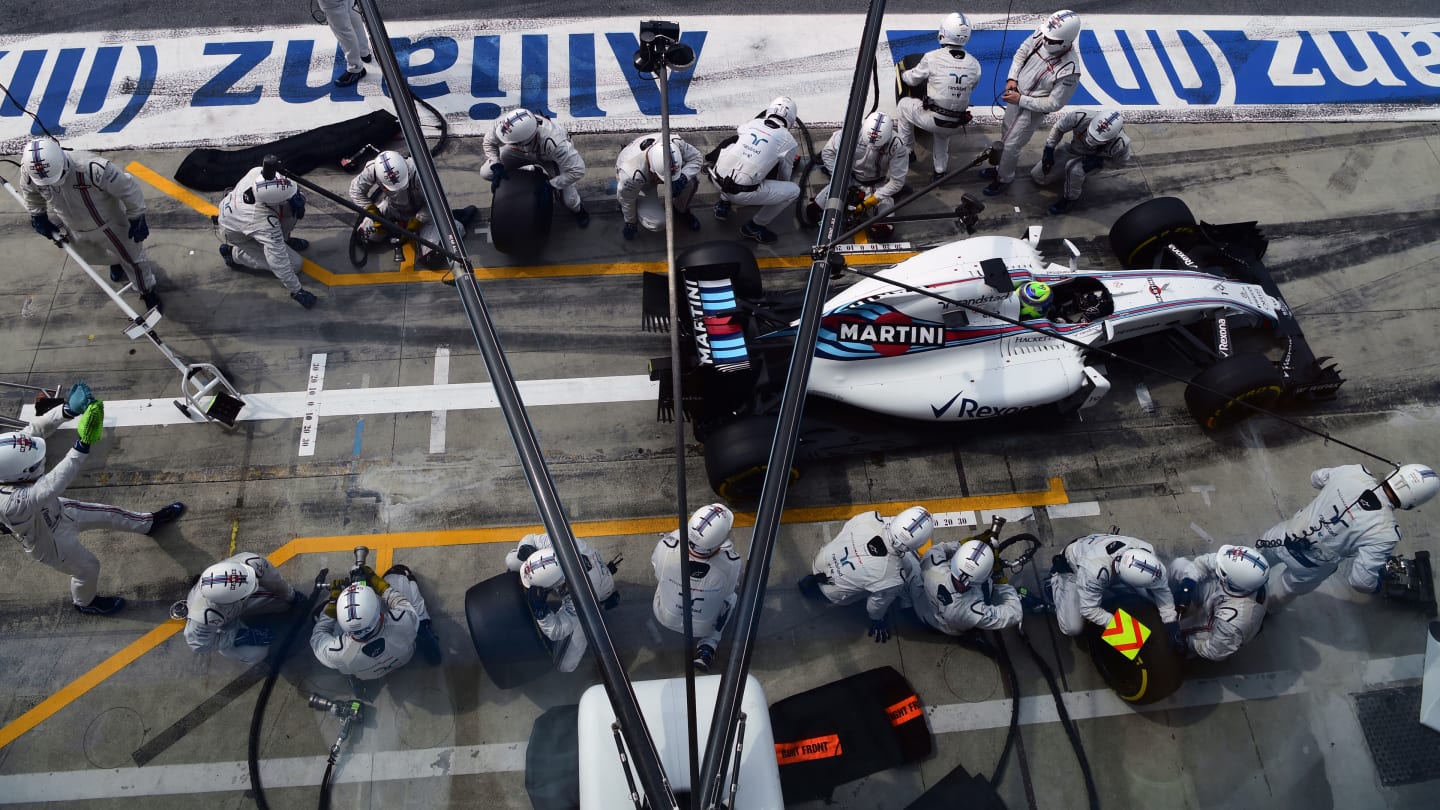
Feature
Gone in 1.9 seconds - the quest for the perfect pit stop
Share

The perfect pit stop is something you hear, not something you see. Everyone working a stop, or watching from the garage or pit wall is subconsciously listening out for the stop that sounds right. The team want to hear two noises, no more than that, with the four wheel guns firing twice in perfect unison, as the old wheels come off and the new wheels go on. If there isn’t a gun out of phase, or a lag from one corner, you know you’ve got a good one. It sounds straightforward. It isn’t…
The contest between pit crews is as fierce as any facet of competition in F1. Often it’s simply a battle for bragging rights; occasionally a chance to gain or defend a place; very occasionally it will be the difference between winning and losing. It’s fascinating to watch. The modern pit stop is as intricate as any ballet. Upwards of 20 individuals working in well-practiced harmony, a top team changing four wheels, adjusting a front wing, cleaning a rear wing and perhaps scrubbing a visor and clearing radiators in under three seconds or, on a really good day, under two…
WATCH: Williams record the fastest pit stop of 2016 in Baku
Timing is everything
In the past, judging the fastest pit stop has been a nebulous thing. It’s relatively straightforward to gauge the time a car takes in the pit lane but the actual pit stop - the time the car is stationary - was harder to judge, relying first on stopwatches, then on TV and latterly on data from onboard sensors. The problem is that such measurements lacked a common standard: stopwatches are operated by twitchy thumbs; TV cameras were all different; the calibration of sensors isn’t universal. For internal consumption in the paddock the figures were accepted and trusted - but for the wider world something more robust was required - which is why in 2016 the DHL Fastest Pit Stop Award was created, featuring identical, calibrated high-speed cameras focussed on each pit box, perfectly capable of judging a pit stop with repeatable precision. Game on.
A period of dormancy
Pit stop performance tends to encompass both evolution and revolution, with best practice slowly chipping away at a target time, aided by the occasional giant leap forwards in technology. In 1993 at the Belgian Grand Prix, Benetton had Riccardo Patrese’s car in the air for 3.2s (as recorded on the car’s data-logging from sensors located in the suspension). From stop to go the process is a little longer than that, but paddock lore has this as probably the fastest stop of the era. The record, if it was such, stood for 16 seasons because the following year refuelling came back into F1. Times suddenly went out to 8-12s, with the pressure off the gunners who had plenty of time while the fuel went in. Even on those rare occasions a driver came in for a tyres-only stop, the hardware wasn’t there for a lightning change, having been redesigned for robustness and functionality rather than speed. Only when refuelling was once again banned did F1 see times start to tumble. And tumble they did...
1 / 3
Rapid improvements
2010 was the first season in the modern era without refuelling. Good teams were doing their stops in around four seconds - but they could do better. Mercedes dropped that to 3.4s in 2011, McLaren took it on to 2.32s in 2012, Red Bull lowered that to 2.05 at the start of 2013 and broke the two-second barrier at the end of the season, cycling Mark Webber through the pits at the United States Grand Prix in a startling 1.92 seconds. And then… a pause.
Teams continued to bring their average times down in the last few years but the string of record-breaking performances halted. Technology intervened. “Everyone started to move to blown hubs, which require a bigger nut - and that definitely made things more difficult,” explains Williams' recently departed chief technical officer Pat Symonds. “The simplest way to explain it is the difference between unscrewing the top of a plastic water bottle compared with something like a pickle jar. The plastic water bottle, with a smaller thread is easy; the pickle jar can be really quite difficult to get started. The larger wheel nuts of the blown hubs are like that - it may only take a tenth longer but when you’re talking about tiny fractions, it matters.”
Red Bull’s unofficial record stood until 2016 when, improbable though it may seem, Williams equalled it with a 1.92s stop of their own at the European Grand Prix in Baku.
Williams were the standout pit stop performers in 2016, topping the DHL table in 14 of the 21 races. This is quite the turnaround. The team was plagued by poor stops in 2015 and this, says Symonds, was the catalyst for change. “A lot of process has gone into it,” he explains. “It was driven very much by the fact that last year our pit stops were below the standard that was required.
“I’ve always been of the opinion that, no matter who you are, what your team is, how your finances are fairing, one of the things you really ought to be able to do fairly well is pit stops. They don’t come for free - but you don’t need to have a £250 million budget to do good pit stops. This, coupled with our poor performance last year, made us look very, very deeply at the issue.
“I think we were the first team to employ a physio specifically to look after the pit stop crew - but we also got into the design. There were aspects of the design that could be improved. Firstly we had a problem last year with the wheels sticking but that wasn’t all of it. We needed a root-and-branch look at the whole design: the hub, the wheel, the nut, the threads, drive pegs, wheel guns - every single bit of it. What we’ve seen this year is the normal, incremental improvement you get when you add up all these tiny little bits.”
1 / 2
Diminishing returns
If Williams made gains by spending money and working on their design, it begs the question why isn’t every other team doing the same? The answer lies in a fairly simple equation of cost versus benefit. The teams spent big in the years following the refuelling ban and made big gains. Today, there simply aren’t big time gains to be made: they may shave a tenth off a pit stop time - but that’s only a tenth gained on two or perhaps three laps of a race: allocating the same budget to car design might result in a tenth gained on every lap.
“We’re at a point of diminishing returns,” says Red Bull Racing team manager Jonathan Wheatley. “You could spend a lot of money to find five-hundredths of a second - but at some point you’ve got to say you’ve reached a level where you’re comfortable for now.”
Symonds concedes that Williams would probably not have spent the money on a fundamental pit stop redesign had they not suffered with the issues in 2015 that were costing them positions - and points - through botched stops. “I don’t think we’d have ignored it - because we have, within the team, a pit stop working group that’s always pushing for improvements - but I think it’s true to say we’ve put more focus on it because of poor results last year. We probably did increase our resource allocation on the design side.”
1 / 2
The technology arms race
As to how much a team could spend on pit stop performance; there really is no upper limit. The innovation roll-call over the last few years demonstrates the willingness of teams to develop this particular aspect of their performance.
The traffic lights systems that began to appear before the refuelling ban have become standard, shaving fractions off response times by giving gunners a button to press when their task is completed, rather than relying on a lollipop man to make a visual confirmation. More recent has been the introduction of the quick-release swivel jacks that allow the front jack operator to move aside before the stop is completed and then drop the car at the touch of a button, swinging the lightweight carbon fibre jack out of the way, while one task has been entirely eradicated with wheel nuts now held captive in the wheel. Some teams have their overhead booms studded with laser pointers, helping the crew position their hands in just the right spot to receive the car.
Other developments are less easy to spot: the thread on a wheel nut might seem like a technology that cannot be improved - but teams are obsessive about creating the perfect thread design; the one which goes on and comes off at high speed, doesn’t cross-thread or seize. Despite decades of collective experience in doing this, teams have been known to go through three or four thread designs in a season.
The counterpart to the nut is the wheel gun. The teams all use the same Italian supplier but not all wheel guns are the same. Teams tend to customise their guns; developing their own grips, designing their own internals, all in an effort to speed up the process of loosening and tightening bolts. It’s noticeable, for example, that the guns of different teams operate at different pitches.
Wheel guns came to public attention in 2011 when Mercedes replaced the traditional pneumatics with a helium-powered system. Being a thinner gas, Helium could deliver a faster pulse to the guns, increasing the revs. It soon became a must-have technology - but at a price. Not only was the helium itself expensive but its use had a habit of degrading the guns, requiring rebuilds every few races. With elite-level wheel guns costing up to €5,000, and each team having perhaps 25, financial directors heaved a collective sigh of relief when the regulations were tweaked to stipulate wheel guns could be powered by air (or nitrogen) only…
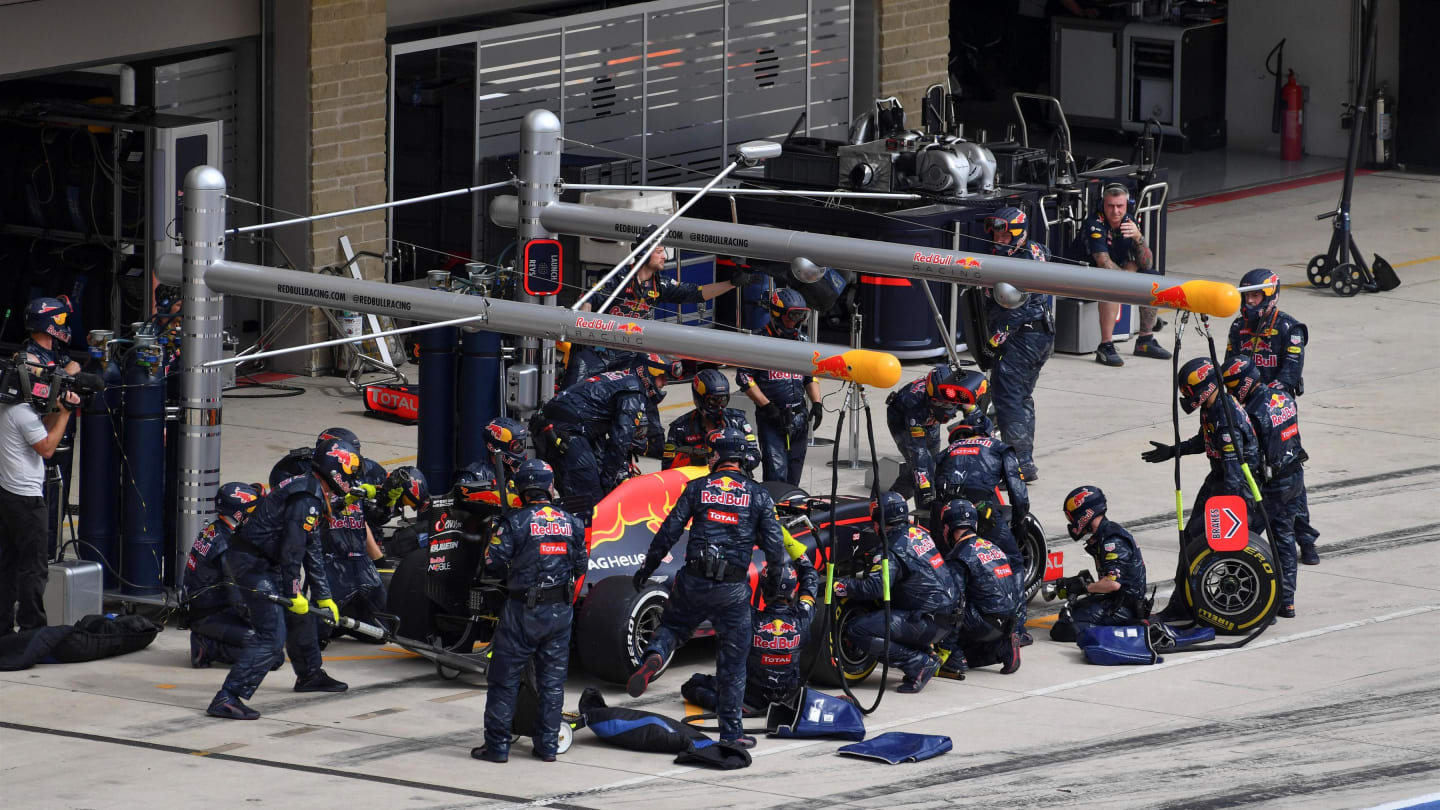
Jonathan Wheatley, Red Bull team manager, on the perfect pit stop
“A pit stops starts several laps before the car comes in. If everything is in order, then everyone’s mental state is right when they walk out. If it’s a rushed stop I think they’re in a different frame of mind, so the first thing is to get everyone into the correct mindset. I might talk to them a little bit, give them something to think about.
“Next the driver has to stop absolutely on the marks with no drama, so no-one is having to back away or adjust. Then everyone has to do their job properly. The gunmen have to get onto the nut correctly, the jackmen have to get on first time. That’s most difficult for the rear jack because he has to wait until the car has come past to engage it. You can be as fast as you like with the wheel nuts but you can’t take the wheels off while the car is still on the ground.
“Taking the wheel off sounds like an easy job but it isn’t. They’re heavy, and the guys have to reach forward and shift the weight at an awkward angle. Then the new wheels have to go on without any fumbles, the jacks have to come away smoothly and the driver needs to have his reactions perfect - which again isn’t as straightforward as it sounds because he may be using the time to adjust switches on his steering wheel.
“But, if you pull all of that together, if everyone’s having the perfect day at the same time - then you can get something really special.”
The human factor
An interesting side note about wheel guns, and pit stops in general, is the rules that severely limit automation. Unlike other race series with automatic jacks, F1 requires cars be lifted by humans. It’s also a requirement that the wheel gunner be responsible for applying torque to the wheel nut, rather than an automated system. The message is clear: pit stops, for all their technology, remain firmly in the hands of the crew performing them.
Managing that crew is a delicate business. Dropping a pit stop in the low two-second window is the result of many hours' practice at the circuit and in the factory - but not too many hours.
“You can wear the guys out and - worse - lose their enthusiasm if you don’t consider it carefully,” says Wheatley. “There has to be a balance, and part of that means not scheduling so much practice that people start to lose motivation. We wouldn’t, for example, practice in the factory the first day back after a race - because everyone will be tired. We also won’t practice the standard stop all the time. We’ll break that up by practicing the ‘set-piece’ stops - punctures, nose cone changes and so on.”
Chasing records - or not
Practice routines have many targets but breaking records during a Grand Prix isn’t one of them. In fact, chasing a faster time tends to be discouraged.
“It’s about consistency,” insists Toro Rosso team manager Graham Watson. “If the guys start rushing, they start snatching at it and things then start to go wrong. When things start to go wrong, confidence starts to drop, and when the next pit stop comes along, they’re dwelling on what happened before. We try to keep them back a little from that maximum pace.
“It’s a very simple process but trying to tie all four corners together is difficult. Maybe each corner is capable of doing a stop in two seconds - but unless all four are doing it as one unit, it’s pointless. If the wheels don’t come off together, the car starts rocking and tilting which creates other issues, so the aim is to get them all to work together as a group rather than it being seen as a competition.”
“Consistency is more important than speed,” agrees Symonds. “I’d rather be doing every single stop at 2.4s than one at 2.1s and the rest at 3.5s. Our initial target this year was to have every pit stop under three seconds. I would think we’re now able to refine that down a little bit to 2.7s-2.8s.”
That shouldn’t be taken to mean the DHL Fastest Pit Stop Award won’t get a new benchmark. Several teams privately confirm they think 1.7s-1.8s is within their reach with the present technology. “I don’t think we’re going to further invest but we’ll keep doing what we’re doing,” concludes Symonds. “The guys can make it go quicker.”
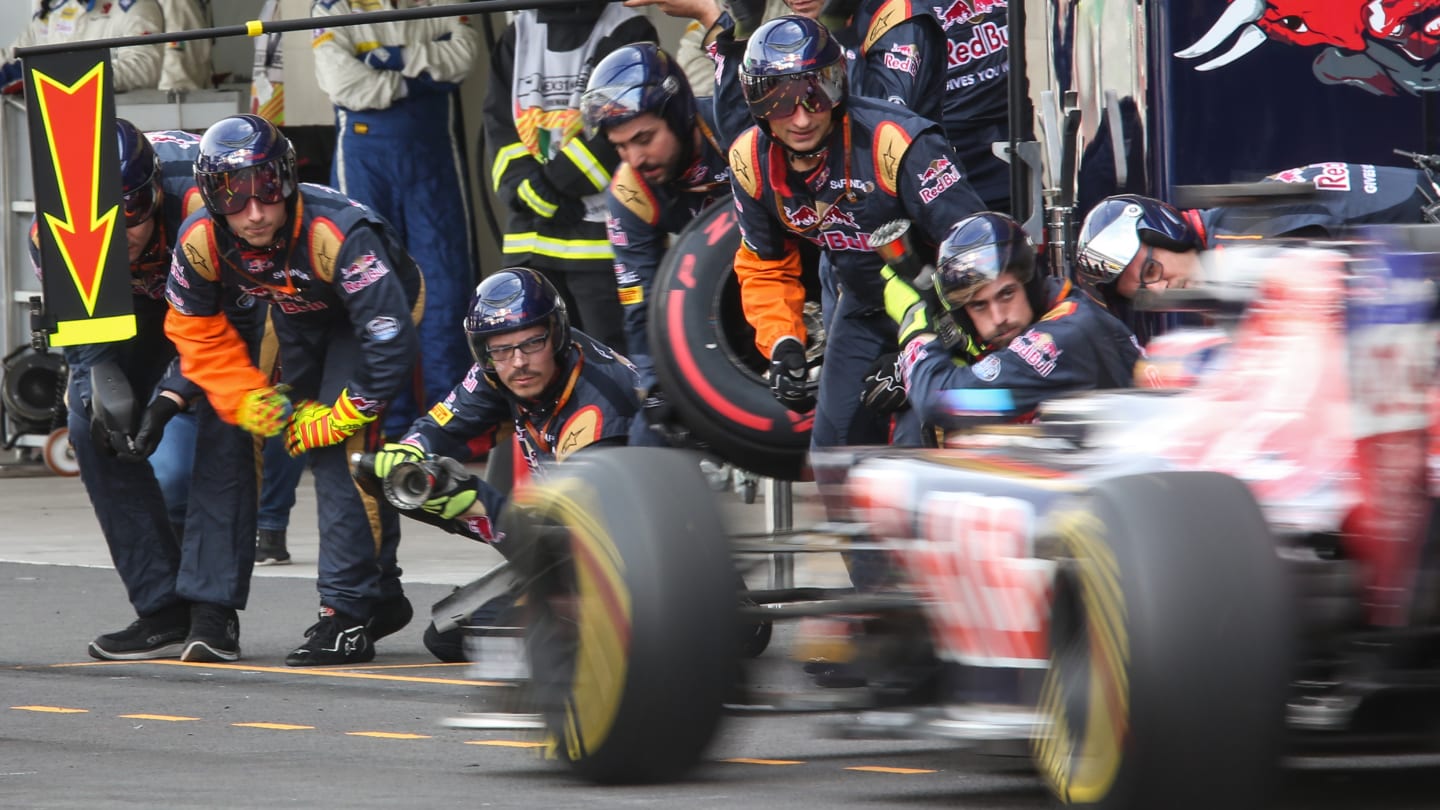
YOU MIGHT ALSO LIKE
Report F2: Maini takes lights-to-flag Sprint Race victory in Monaco
News OFFICIAL GRID: Who starts where in Monaco after Hamilton, Bearman and Stroll take penalties
News Hamilton hit with three-place Monaco GP grid drop for blocking Verstappen in Qualifying
Report F2: Crawford wins Monte Carlo Feature Race after red flag drama
